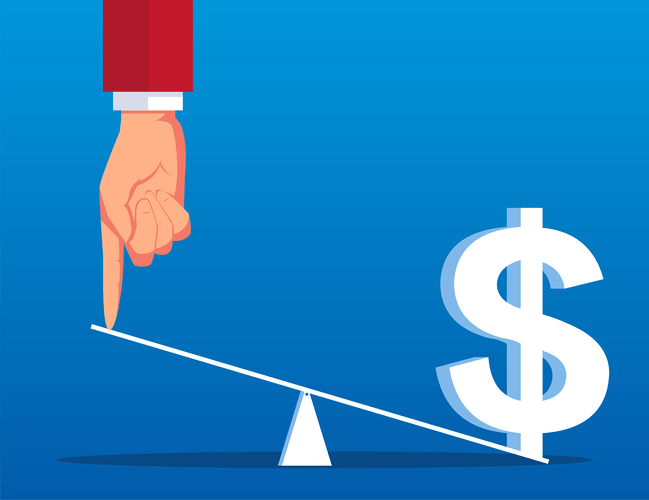
This is because the method takes into account the asset’s residual value, which is the estimated value of the asset at the end of its useful life. By using a higher depreciation rate in the earlier years, the method double declining balance method can better reflect the asset’s decline in value and estimate its residual value more accurately. Depreciation is an accounting process by which a company allocates an asset’s cost throughout its useful life.

Ask Any Financial Question
Enter the straight line depreciation rate in the double declining depreciation formula, along with the book value for this year. If something unforeseen happens down the line—a slow year, a sudden increase in expenses—you may wish you’d stuck to good old straight line depreciation. Since the net income is reduced in double declining balance, the profitability and operational efficiency ratios tend to get skewed negatively compared to the straight line method. At the beginning of the first year, the fixture’s book value is $100,000 since the fixtures have not yet had any depreciation. Therefore, under the double declining balance method the $100,000 of book value will be multiplied by 20% and will result in $20,000 of depreciation for Year 1.

Managing Restricted Funds: Types, Accounting, and Reporting
Because twice the straight-line rate is generally used, this method is often referred to as double-declining balance depreciation. Use our online form to request a no-cost projection of the tax savings available to you under the current law. The straight-line depreciation method is a common way of allocating “wear and tear” to the cost of an item over its lifespan. Suppose that the company changes salvage value from $10,000 to $17,000 after three years, but keeps the original 10-year lifetime. With a book value of $73,000, there is now only $56,000 left to depreciate over seven years, or $8,000 per year.
How To Calculate The Double-Declining Balance Depreciation
In the double declining balance depreciation method, the asset will be depreciated by 20% annually until the salvage value is reached. In this approach, the asset is depreciated at double the rate as compared to straight-line depreciation. The double declining balance (DDB) depreciation method is an accounting approach that involves depreciating certain assets at twice the rate outlined under straight-line depreciation.
Straight-Line Method of Depreciation
Straight-line depreciation assumes that the asset decreases in value by the same amount each year. This may not always be the case, especially for assets that are subject to wear and tear or obsolescence. You may make an irrevocable election to use the Straight Line method, instead of the Declining Balance method, for all property within a classification that is placed in service during the tax year. For 3-, 5-, 7-, or 10-year property eligible for the 200% Declining Balance method, you may make an irrevocable election to use the 150% Declining Balance method.
- In the second year, depreciation is calculated in a regular way by multiplying the remaining book value of $36,000 ($40,000 — $4,000) by 40%.
- Therefore, a company may want to allocate as little depreciation expenses as possible in later years so that it would not add more cost deductions to reduce reported profits.
- When we use double declining balance depreciation, the depreciation expense is higher in the early years as compared to later years.
- 11 Financial’s website is limited to the dissemination of general information pertaining to its advisory services, together with access to additional investment-related information, publications, and links.
- For example, an investment in high-tech equipment with rapid obsolescence might benefit from accelerated depreciation, enhancing its short-term ROI.

A form of accelerated depreciation where the asset is depreciated at double the rate as compared to straight-line depreciation. Consider a widget manufacturer that purchases a $200,000 packaging machine with an estimated salvage value of $25,000 and a useful life of five years. Under the DDB depreciation method, the equipment loses $80,000 in value during its first year of use, $48,000 in the second and so on until it reaches its salvage price of $25,000 in year five. What it paid to acquire the asset — to some ultimate salvage value over a set period of years (considered the useful life of the asset). By reducing the value of that asset on the company’s books, a business can claim tax deductions each year for the presumed lost value of the asset over that year.

There are different methods of calculating depreciation, including the declining balance method and the straight-line method. However, using the double declining depreciation method, your depreciation would be double that of straight line depreciation. Under the generally accepted accounting principles (GAAP) for public companies, expenses are recorded in the same period as the revenue that is earned as a result of those expenses. Another advantage of straight-line depreciation is that it provides a more accurate representation of an asset’s value over time. This can be especially important for businesses that have a large number of assets that need to be tracked and reported on. Since the assets will be used throughout the year, there is no need to reduce the depreciation expense, which is why we use a time factor of 1 in the depreciation schedule (see example below).
By applying the DDB depreciation method, you can depreciate these assets faster, capturing tax benefits more quickly and reducing your tax liability in the first few years after purchasing them. Leveraging AI in accounting allows businesses to focus on strategic decision-making, reduce errors, and enhance overall financial management. By integrating AI, companies can ensure precise and efficient handling of their asset depreciation, ultimately https://www.bookstime.com/ improving their financial operations. Multiply the straight line depreciation rate by 2 to get the double declining depreciation rate. After analyzing and comparing the declining balance method and straight-line method, it is clear that both methods have their own advantages and disadvantages. The choice between the two methods ultimately depends on the specific circumstances of the business and what the business values most.
This, in turn, helps to match expenses with revenues and provides a more accurate picture of a company’s financial performance. While you don’t calculate salvage value up front when calculating the double declining depreciation rate, you will need to know what it is, since assets are depreciated until they reach their salvage value. Unlike straight line depreciation, which stays consistent throughout the useful life of the asset, double declining balance depreciation is high the first year, and decreases each subsequent year. Double Declining Balance (DDB) and Straight-Line (SL) depreciation are the two most popular methods used to calculate depreciation for fixed assets. While straight-line depreciation is the simplest method, Double Declining Balance is a more complex and sophisticated approach. With Double Declining Balance, an asset’s depreciation expense is calculated as a percentage of the asset’s book value, which declines each period.